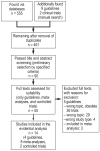Mechanical Ventilation and Extracorporeal Membrane Oxygena tion in Acute Respiratory Insufficiency
- PMID: 30722839
- PMCID: PMC6375070
- DOI: 10.3238/arztebl.2018.0840
Mechanical Ventilation and Extracorporeal Membrane Oxygena tion in Acute Respiratory Insufficiency
Abstract
Background: Mechanical ventilation is life-saving for patients with acute respiratory insufficiency. In a German prevalence study, 13.6% of patients in intensive care units received mechanical ventilation for more than 12 hours; 20% of these patients received mechanical ventilation as treatment for acute respiratory distress syndrome (ARDS). The new S3 guideline is the first to contain recommendations for the entire process of treatment in these groups of patients (indications, ventilation modes/parameters, ac- companying measures, treatments for refractory impairment of gas exchange, weaning, and follow-up care).
Methods: This guideline was developed according to the GRADE methods. Pertinent publications were identified by a systematic search of the literature, the quality of the evidence was evaluated, a risk/benefit assessment was conducted, and recommendations were issued by interdisciplinary consensus.
Results: Mechanical ventilation is recommended as primary treatment for patients with severe ARDS. In other patient groups, non-in- vasive ventilation can lower mortality. If mechanical ventilation is needed, ventilation modes allowing spontaneous breathing seem beneficial (quality of evidence [QoE]: very low). Protective ventilation (high positive end-expiratory pressure, low tidal volume, limited peak pressure) improve the survival of ARDS patients (QoE: high). If a severe impairment of gas exchange is present, prone posi- tioning lessens mortality (QoE: high). Veno-venous extracorporeal membrane oxygenation (vvECMO) has not unequivocally been shown to improve survival. Early mobilization and weaning protocols can shorten the duration of ventilation (QoE: moderate).
Conclusion: Recommendations for patients undergoing mechanical ventilation include lung-protective ventilation, early sponta- neous breathing and mobilization, weaning protocols, and, for those with severe impairment of gas exchange, prone positioning. It is further recommended that patients with ARDS and refractory impairment of gas exchange should be transferred to an ARDS/ECMO center, where extracorporeal methods should be applied only after application of all other therapeutic options.
Figures
Comment in
-
Conflicting Results.Dtsch Arztebl Int. 2019 Apr 19;116(16):286. doi: 10.3238/arztebl.2019.0286a. Dtsch Arztebl Int. 2019. PMID: 31159916 Free PMC article. No abstract available.
References
-
- Bellani G, Laffey JG, Pham T, et al. Epidemiology, patterns of care, and mortality for patients with acute respiratory distress syndrome in intensive care units in 50 countries. JAMA. 2016;315:788–800. - PubMed
-
- Karagiannidis C, Brodie D, Strassmann S, et al. Extracorporeal membrane oxygenation: evolving epidemiology and mortality. Intensive Care Med. 2016;42:889–896. - PubMed
-
- Langer G, Meerpohl JJ, Perleth M, Gartlehner G, Kaminski-Hartenthaler A, Schünemann H. GRADE-Leitlinien: 1 Einführung - GRADE-Evidenzprofile und Summary-of-Findings-Tabellen. Z Evid Fortbild Qual Gesundhwes. 2012;106:357–368. - PubMed
-
- Schünemann H. Integrative assessment of evidence in healthcare: the GRADE system. Z Evid Fortbild Qual Gesundhwes. 2009;103:261–268. - PubMed
Publication types
MeSH terms
LinkOut - more resources
Full Text Sources
Medical


